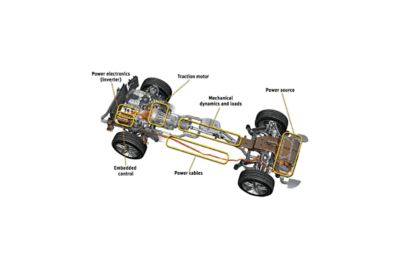-
United States -
United Kingdom -
India -
France -
Deutschland -
Italia -
日本 -
대한민국 -
中国 -
台灣
-
Ansys는 학생들에게 시뮬레이션 엔지니어링 소프트웨어를 무료로 제공함으로써 오늘날의 학생들의 성장을 지속적으로 지원하고 있습니다.
-
Ansys는 학생들에게 시뮬레이션 엔지니어링 소프트웨어를 무료로 제공함으로써 오늘날의 학생들의 성장을 지속적으로 지원하고 있습니다.
-
Ansys는 학생들에게 시뮬레이션 엔지니어링 소프트웨어를 무료로 제공함으로써 오늘날의 학생들의 성장을 지속적으로 지원하고 있습니다.
Ansys Blog
June 26, 2019
Systems Simulations and Embedded Software Are the Key to Battery Management System Design
The automotive industry is facing a major shift as electric vehicles are starting to replace petroleum-based cars. As customers begin to trade in their gasoline-based autos for electric buggies, they will start to expect similar, even superior performance from their latest rides.
To meet this demand, engineers must design batteries and battery management systems (BMS) that can control a car’s engine, air conditioning, heating, infotainment systems and more.
A battery management system (BMS)
controls a lot more than just a battery
and its motor. It is an integral part
of every electronic system in the car
To create a BMS design that is up to the task, engineers can use Ansys Twin Builder, Ansys medini analyze and Ansys SCADE.
What Electronic Systems Do Battery Management Systems Control?
A BMS is the brain of the electric vehicle’s power systems. It has many functions that include:
- Monitoring the cell voltage and temperature
- Preserving healthy operating conditions
- Monitoring system connectivity
- Measuring current
- Calculating state of charge (SOC) and state of health (SOH)
- Balancing electrical input/output
- Establishing connections between the battery, power train and charging system
In short, the BMS design ensures that the driver experiences a smooth, safe and efficient ride. It also keeps the driver aware of the electric vehicle’s condition and can enact emergency procedures to prevent damage or catastrophic failures.
ANSYS Twin Builder can be used to create system models
Engineers can design a BMS by first creating a system model in Twin Builder. Next, engineers can use SCADE Suite to create and verify the BMS’s embedded controls software, in parallel with Ansys medini analyze, to ensure its safety. These three tools can then be used to virtually prototype the BMS and ensure that it is working properly.
To learn more about BMS design and how multiphysics systems simulations can optimize batteries, read: Managing Large-Scale Battery Systems.












